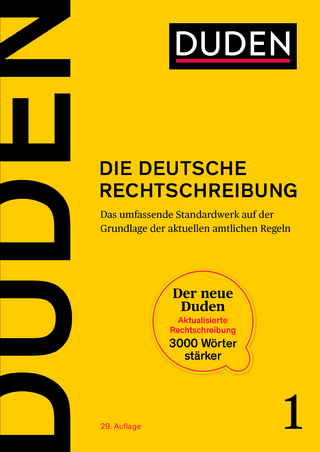
A Learner's Grammar of Levantine Arabic
Georgetown University Press (Verlag)
978-1-64712-485-4 (ISBN)
- Noch nicht erschienen (ca. März 2025)
- Versandkostenfrei innerhalb Deutschlands
- Auch auf Rechnung
- Verfügbarkeit in der Filiale vor Ort prüfen
- Artikel merken
A Learner's Grammar of Levantine Arabic is a comprehensive guide to the grammatical structures and rules of the Arabic varieties spoken in the Levant region, such as Palestinian, Syrian, Jordanian, and Lebanese. This book is suitable for beginners through more advanced levels, and it is the first to present North and South Levantine varieties side by side, allowing learners and linguists to compare them with each other and with other varieties of spoken Arabic.
Hitchcock groups major grammatical concepts together, making it easy to find information quickly, and he provides easy-to-understand explanations. The book includes extensive appendixes, with verb charts, prepositions, and conjunctions. Copious examples of native speaker usage—culled from newspapers, television programs, and more—are provided for each concept, helping learners understand how to apply the concepts to their own communications outside the classroom.
Chris Hitchcock is a freelance translator, interpreter, and researcher who has lived and worked in the Middle East. He also maintains the website Team Maha, a blog for learning Syrian Arabic. Elias Shakkour directs the Translator and Interpreter Corps at DePaul University and is a certified translator of Arabic, Dutch, French, German, Italian, Portuguese, and Spanish.
IntroductionHow to Use This Book
Part 1: SoundsUnit 1: The Sounds of Levantine ArabicUnit 2: Stress and the Helping VowelUnit 3: Regional VariationUnit 4: Sound ChangesUnit 5: Introduction to Roots and PatternsUnit 6: Weak Roots
Part 2: Word TypesUnit 7: Derived NounsUnit 8: The Feminine Suffix -a/eUnit 9: Nouns with -iUnit 10: Gender of NounsUnit 11: Singular, Plural, Count and Mass NounsUnit 12: Plural FormationUnit 13: DefinitenessUnit 14: DemonstrativesUnit 15: The 2iDaafeUnit 16: AdjectivesUnit 17: More on AdjectivesUnit 18: PronounsUnit 19: The -l- SuffixUnit 20: AdverbsUnit 21: PresentativesUnit 22: PrepositionsUnit 23: Verb DerivationUnit 24: Some Unexpected Verb TypesUnit 25: The PerfectiveUnit 26: The Imperfective: Simple VerbsUnit 27: The Imperfective: Derived VerbsUnit 28: The ImperativeUnit 29: The Active ParticipleUnit 30: The Passive ParticipleUnit 31: maSdars
Part 3: TenseUnit 32: Introduction to TenseUnit 33: The PerfectiveUnit 34: The ImperfectiveUnit 35: Continuous ConstructionsUnit 36: Future ConstructionsUnit 37: ParticiplesUnit 38: Framing Constructions: kaanUnit 39: Framing Constructions Indicating a Change of StateUnit 40: Framing Constructions Indicating DurationUnit 41: Miscellaneous Framing StructuresUnit 42: Context Framing
Part 4: MoodUnit 43: Commands and InstructionsUnit 44: Suggestions, Requests, Wishes, Exclamations, and OathsUnit 45: Modal Framing StructuresUnit 46: Miscellaneous Modal Structures
Part 5: Sentence StructureUnit 47: Verbal SentenceUnit 48: Topic SentenceUnit 49: "To Be" Sentences and Existential ("There Is") SentencesUnit 50: AgreementUnit 51: SubjectsUnit 52: Direct and Prepositional ObjectsUnit 53: Indirect Objects with -la- and 3alaUnit 54: Secondary ObjectsUnit 55: Reflexive and Reciprocal ConstructionsUnit 56: Causative Constructions ("Make" and "Let")Unit 57: Passive and Impersonal ConstructionsUnit 58: Introduction to SubordinationUnit 59: Object SubordinationUnit 60: Nonobject SubordinationUnit 61: Special Zero-ImperfectivesUnit 62: Double-Verb ConstructionUnit 63: Basic Relative ClausesUnit 64: More Complicated Relative ClausesUnit 65: The 7aalUnit 66: Changes to Word Order and Emphasis
Part 6: Conjunction ConstructionsUnit 67: Coordinating ConjunctionsUnit 68: Subordinating Conjunctions
Part 7: Conditional StructuresUnit 69: Open ConditionalsUnit 70: Hypothetical ConditionalsUnit 71: Other Conditional Constructions
Part 8: QuestionsUnit 72: Closed QuestionsUnit 73: Open Questions: Core QuestionsUnit 74: Open Questions: Noncore QuestionsUnit 75: Subordinated Questions
Part 9: NegationUnit 76: Basic NegationUnit 77: Other Common NegativesUnit 78: Other Negative Structures
Part 10: ComparativesUnit 79: ComparisonsUnit 80: Superlative Constructions
Part 11: Location and DestinationUnit 81 Location and Destination
Part 12: Numbers and Quantity ExpressionsUnit 82: NumbersUnit 83: Ordinal Numbers and FractionsUnit 84: Quantifiers and Other Quantity Expressions
AppendicesAppendix A: Verb TablesAppendix B: PrepositionsAppendix C: ConjunctionsAppendix D: Politeness, Impoliteness, and Terms of Address
Index
| Erscheint lt. Verlag | 3.3.2025 |
|---|---|
| Co-Autor | Elias Shakkour |
| Verlagsort | Washington, DC |
| Sprache | englisch |
| Maße | 178 x 254 mm |
| Themenwelt | Schulbuch / Wörterbuch ► Wörterbuch / Fremdsprachen |
| Geisteswissenschaften ► Sprach- / Literaturwissenschaft ► Sprachwissenschaft | |
| ISBN-10 | 1-64712-485-9 / 1647124859 |
| ISBN-13 | 978-1-64712-485-4 / 9781647124854 |
| Zustand | Neuware |
| Informationen gemäß Produktsicherheitsverordnung (GPSR) | |
| Haben Sie eine Frage zum Produkt? |
aus dem Bereich


